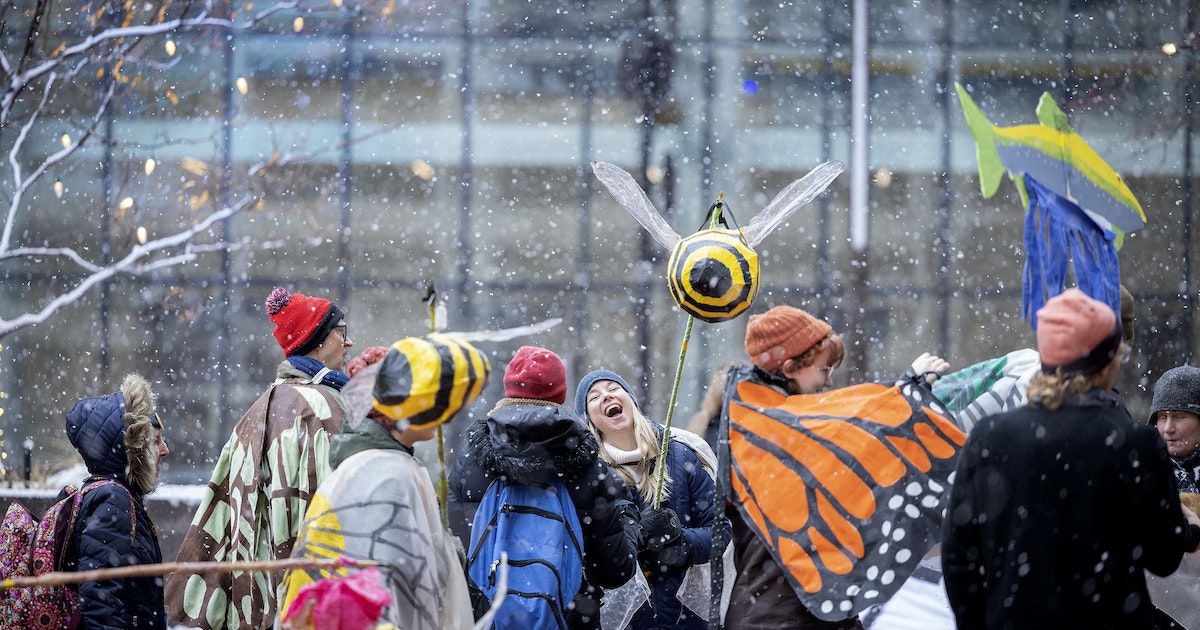Opinion editor’s note: Star Tribune Opinion publishes letters from readers online and in print each day. To contribute, click here.
•••
I appreciate the Hennepin County Board’s adoption of a land acknowledgment statement recognizing the harm Minnesota’s white settler forefathers brought to the Native peoples who lived on this land (“County issues land acknowledgment,” Dec. 28).
I ask each county commissioner to consider how they can use their influence to repair some of the damage done to the native people who live in Hennepin County. Specifically, consider how you can impact the decisions made by the city of Minneapolis relating to the Roof Depot demolition planned in the Phillips neighborhood. This is a perfect opportunity to show the Native community that your land acknowledgment is not just a bunch of words, but a real vision and mission that carries some weight.
Past commentaries published in the Star Tribune have described the health disparities between the people of Phillips and the rest of Minneapolis. The harmful effects of vehicle exhaust on children with asthma is well documented. This will be aggravated if the city’s plan to establish a public works yard at this location is allowed to continue.
Can you not see the environmental racism embedded in Minneapolis’ current plans? The racist attitudes shown to Native people in the past are still present today in the decisions our politicians make every day. Of any city neighborhood, East Phillips has the highest population of Native people. When will someone have the courage to say “no more”?
Mary Vanderford, Minneapolis
•••
The Dec. 27 paper had an important article on the mass execution of 38 Dakota men in Mankato, Minn., on Dec. 26, 1862 (“Riders share history’s burden”). I would like to add this footnote.
I grew up in Mankato, and for the entire period of my youth (1939-1961) a commemorative monument was placed on the main intersection in town. It read something like “Here were hanged 38 Indians” and appeared to celebrate the victory in the Indian Wars. Fortunately, later generations recognized that this was a monument to shame, not pride, and it was removed.
In 1990, Prof. Carol Chomsky of the University of Minnesota Law School published a detailed study of the trials that led to these executions, “The United States-Dakota Wars Trials: a Study of Military Injustice,” published in Volume 43 of the Stanford Law Review. Her research demonstrated that:
It was reported that the 38 men clasped hands and marched to the gallows calmly and with dignity, singing traditional songs.
Sam Hanson, Minneapolis
The writer is a retired justice of the Minnesota Supreme Court.
The tragedies emanating from cryptocurrency are numerous and well known. I hope the goal will be to simply stop it. Cryptocurrency is only wild speculation with the only possible outcome being collective net losses. No wealth is ever created. And it is costly both economically and to the environment because it consumes more electricity than all of the Netherlands. So, let’s not try to fix it, just kill it. Remember: “You cannot improve the taste of cow manure by adding sauerkraut.”
Frederick M. Zimmerman, Minnetonka
Here’s a way to fill out some of the empty office space downtown: education. According to a September Star Tribune article, Minneapolis is building a $88 million career and technical center at North High School. Why isn’t this going downtown in one of many empty facilities? It would be more accessible to all students because downtown is a public transportation hub. It would be more cost effective because the space is already available.
Dennis West, Minneapolis
•••
There have been several articles recently lamenting the loss of vibrancy in downtown Minneapolis: much hand-wringing about what we’ve lost with the demise of the compulsory five-day in-person workweek. But now that downtown’s streets no longer need to accommodate the same crushing loads of morning and afternoon rush-hour traffic, we have an opportunity to start treating them as the vibrant public spaces they could be, not just as sterile, high-speed traffic arteries. Urban design guru Jeff Speck argues that most American downtowns “are easy to get to but not worth arriving at.” Now that 216,000 office workers are no longer mandated to come downtown every day, we need to focus on transforming it into a place that is worth arriving at. Downtown boosters, seemingly focused almost exclusively on public safety and a return to compulsory office attendance, should spend more energy thinking about how to transform downtown into a comfortable, welcoming and delightful place that people desire to inhabit.
Bob Loken, Minneapolis
It was gratifying to read the article about the young boy who was victimized by bullies and then embraced by the Vikings when they heard of his plight and what they have done to uplift his spirits (“Bullying no match for big sports’ big hearts,” Dec. 23). Since it appeared in the sports section of the paper, it is possible certain readers did not see it, if sports are not of great interest to them (i.e., like my wife) but I recommend it to all. It was ultimately heartwarming in the way a story tinged with sadness can be made positive by human kindness and compassion.
As I concluded my reading of it, I was left with one lingering thought, however. What if the Vikings organization and some of the players were to reach out to the bullies involved in the incident and spend time and energy trying to impact them in a meaningful way? I am not suggesting they be rewarded and lavished with tickets and autographed swag, but rather an encounter with concerned adults that have the cache of fame who might be able to impart a wisdom that could possibly turn their young lives around through caring dialogue and a desire for a better world.
In this season of unlikely, amazing, “pulled from the fire” endings it doesn’t seem entirely far-fetched to me.
Skol Vikings!
Steve Bennett, Golden Valley
© 2023 StarTribune. All rights reserved.


